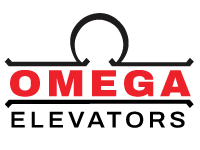An elevator is a machine that is constantly in motion resulting in usage related wear and tear. The electronic components and the mechanical components in the original design often have a finite life as well. Lifespan of an elevator usually is anywhere between 20 to 30 years and is usually based on usage patterns. Many buildings have elevators that were often installed 30 years ago and have significant wear and tear based on usage pattern
What is Elevator Modernization?
Just like a family gets a new appliance for the home once after an equipment’s useful life, it is recommended to modernize the lift in your building or residence after a certain time. Elevator modernization is the process of updating an elevator’s systems. Usually it entails improving its overall aesthetic look and installing the latest mechanical and electronic systems. This upgrade improves its safety, reliability, operational and energy efficiency.
Modernization is a cost-effective alternative to replacing the entire elevator. Especially for safety considerations. It is highly recommended to consider modernization after 2 decades.
What will modernization involve ?
Modernization usually involves replacing mechanical components like the motors and hoisting systems, drives, replacing the electronics, and other worn out parts. The lift cabin can be renovated with modern finishes, cosmetic features and energy efficiency lighting fixtures.
Elevator modernization is important for maintaining safety, efficiency, and reliability in buildings. Upgrading outdated components with the latest technology reduces the risk of malfunctions and enhances energy efficiency, leading to lower operational costs. Modern elevators offer improved performance, faster travel times, and smoother rides, significantly enhancing user experience. With modernization , the existing elevator will be upgraded and a new elevator cabin or lift car is not needed.
There are several technologies which have been developed in the last decade, such as smart elevators, gearless motors, regenerative drives, better load sensors, overload protection mechanisms, destination control systems DCS and energy efficient electronics. Some newer elevator technologies post pandemic include touchless elevators. With AI many technologies can be implemented such as voice recognition and biometric scanning so that the elevators can identify you and take you to your floor without pressing buttons.
Building codes as well as safety standards do get upgraded periodically. Having updated electrical systems that incorporate advanced safety features ensure compliance with prevailing safety standards and regulations.
What are the benefits of Elevator Modernization?
Elevator modernization offers various benefits that significantly enhance both the functionality and value of the property.
Key benefits include:
Improved Safety: Incorporating and installing the latest safety designs and equipment ensures compliance with current codes and standards.
Enhanced Performance: Having the latest technological upgrades, both mechanical and electrical, results in smoother, faster and more reliable rides. Ultimately this upgrade reduces downtime and passenger wait times.
Energy Efficiency: Utilizing modern, energy-efficient technology resulting in lower operational costs and minimizing environmental impact.
Aesthetic Upgrades: Refreshes the look of the elevator, making it more appealing and in line with contemporary design trends.
Increased Property Value: A beautiful well run lift or elevator adds to the building’s value and appeal.
Cost Savings: Reduces maintenance costs through improved reliability and fewer breakdowns.
Accessibility: Often includes improvements that make the elevator more user-friendly for individuals with disabilities.
For property owners, modernization increases the building’s overall value and appeal, attracting potential buyers or tenants. Ultimately, elevator modernization is a smart investment that delivers long-term benefits, combining safety, cost savings, and increased property value. Ultimately, it’s a wise investment in the long–term.


